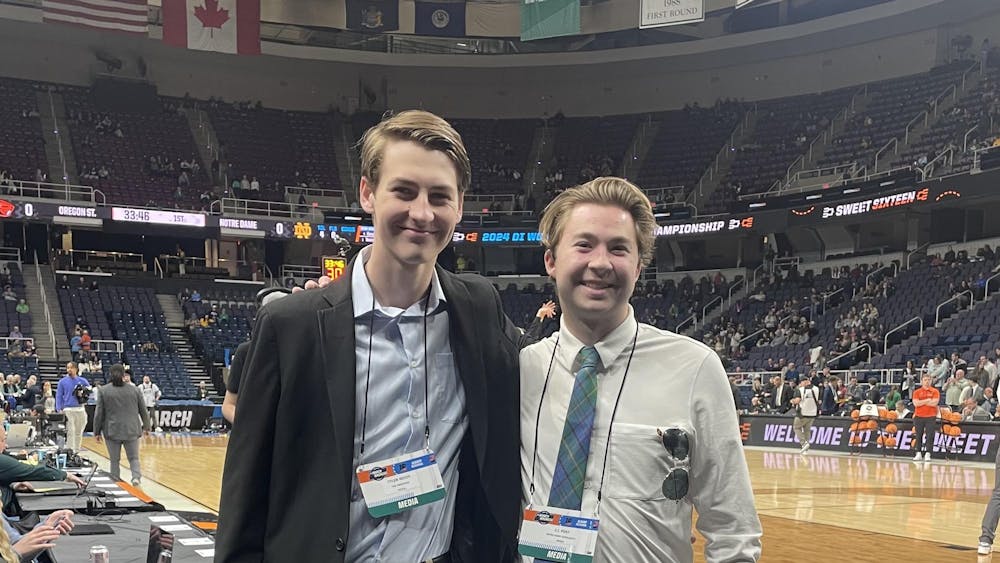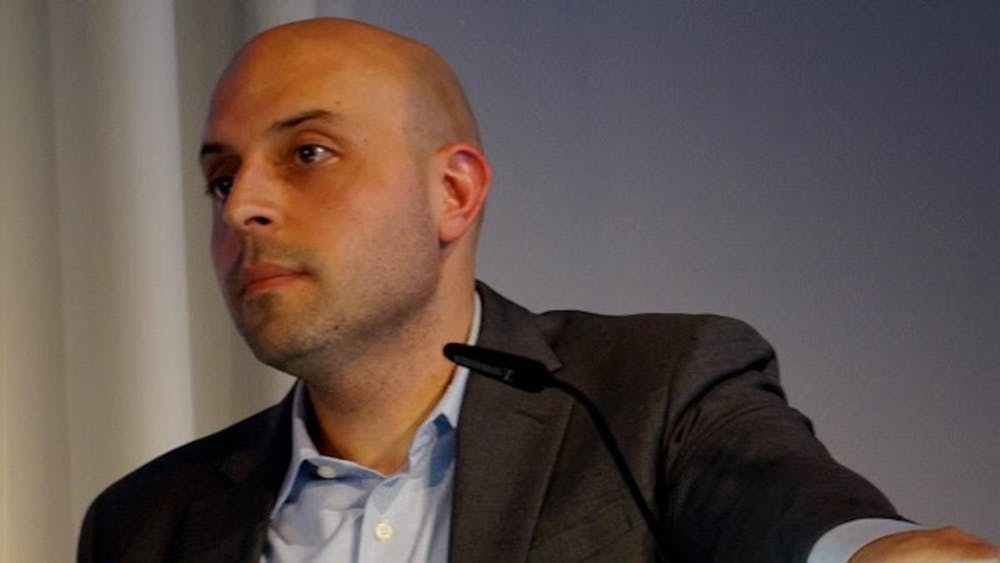Hanging on the wall of LaFortune Student Center is (what seems like) a decades old mosaic. Yellowed by the noxious fumes of Subway and what is certainly stains from the occasional — and utterly tragic — 3 a.m. quarter dog mishap, the mosaic depicts two pretty famous men, arms linked, faces stoic in their resolve. It’s an iconic photograph for anyone familiar with the lore of Notre Dame’s beloved Fr. Theodore Hesburgh. Fr. Ted and Martin Luther King, Jr., despite racial and religious differences, stand arm-in-arm as a force united against the evils of segregation and racial discrimination.
Since this iconic moment was caught on camera some 50-odd years ago, Notre Dame has made sure that everyone knows about its existence. In all honesty, the marketing crew has been working overtime to proselytize the ideal enshrined in such a photograph. It seems that, on campus, every event that even remotely relates to race in the United States is accompanied by some sort of artistic rendering of this event. Even all Notre Dame promotional videos harken back to this photograph. It’s almost as popular a story as the time Notre Dame students beat the KKK to a purpled pulp in 1924. But, Fr. Ted’s signal of solidarity occurred in 1964. Looking at the state of black and brown students at Notre Dame today, though, the question begs: What happened?
As a white man, I don’t presume to speak for the experience of black and brown Domers. For this reason, I will only refer to statistics and stories of which I have firsthand knowledge. It is not my intent to make the black experience at Notre Dame monolithic. The experiential variation of black and brown Domers is certainly vast. Blackness is not a monolith — certainly this is also true at a predominantly white institution. There are, however, a few trends on campus that suggest the photograph in question truly serves as an antidote for pro-black sentiment. These trends show that rather than due to a genuine affection for these past events and understanding of their significance, Notre Dame’s marketing team uses the icon as a propaganda tool of sorts. As an antidote to any excessive pro-black sentiment. As a distraction from a legitimate discussion of issues facing black students at Notre Dame today. As an aggressive call of “this institution can’t possibly be racist … we couldn’t possibly neglect our black and brown students — look at this picture! Don’t you remember Fr. Ted?” Is there something more sinister behind Notre Dame marketing’s obsession with this event? Is the black community at Notre Dame neglected?
A few disturbing facts and anecdotes point to a neglect of sorts being the truth. The first is that Notre Dame’s black population sits at 3.5 percent. That’s compared to an average (for doctoral universities) of 8.1 percent. The fact that black students choose not to come to Notre Dame (or, even worse, are possibly pushed away from attending Notre Dame for a litany of reasons) shows that there is something wrong in the way Notre Dame caters to its black population. Maybe the marketing team, by hailing to a past time when Notre Dame sat at the forefront of racial issues in the United States, is trying to increase this abysmal 3.5 percent. Maybe the answer really is that simple and innocent.
But, then again, maybe not. Notre Dame’s tuition is astronomical. Its tradition is hegemonically white. Its black enrollment, microscopically low. Not to mention highly Catholic (a religion that is notorious for spreading the prosperity gospel to black and brown regions only to enslave and exploit colonial populations and resources). It seems that it would be difficult for a black or brown Domer to truly feel at home in a place where white kids scream the n-word at parties unchecked; where the only talk of Black Lives Matter is discussed through the narrative that Planned Parenthood is a form of genocide targeted at decimating the impoverished black community; where the majority of black students bring in millions of dollars in entertainment value through the athletics department and see very little of that money manifested in Multicultural Student Programs and Services (MSPS); where black students are forced to leave campus for a haircut (or, if they’re lucky, toss a friend a few bucks for a trim); where class discussion of any issue remotely related to race automatically prompts the dreaded professorial interrogation of black students (‘*insert name here*, why don’t you give us the black perspective?’); where a missing black student in class never goes unnoticed.
Again, I want to reiterate that I cannot speak for the black community at Notre Dame. I cannot pretend to know. For that reason, I implore any black readers offended at anything in this article to shoot me an email. Let me know. I’m always learning and am open to any and all criticism.
That being said however, it seems that Fr. Ted arm-in-arm with MLK is nothing but a marketing ploy. Maybe it’s time to retire the adage. Maybe it’s time for Notre Dame to make legitimate efforts to increase its black and brown population and change the Notre Dame culture. This requires more than simply throwing money at the issue. As a university, our answer to issues faced by American minority groups has been loud, hasbeen — in the past.
Before he was assassinated, Martin Luther King Jr. said “I fear that I have integrated my people into a burning house.” It’s clear, now, that he wasn’t wrong. I fear that, as a member of this beloved institution, we are watching this house burn idle. It’s time for Notre Dame to truly walk the walk. It’s time for Notre Dame to start spraying water.













